There are more vegan protein sources than you think
It’s important for vegans and non-vegans alike to eat enough protein. If you skimp on this nutrient, you might have to deal with low protein problems. That’s why the 2015-2020 Dietary Guidelines for Americans specifically recommends 46 grams of protein per day for adult females and 56 grams for adult males. Boost your protein intake with these vegan protein sources, and try pairing them with the best plant-based sources of protein.
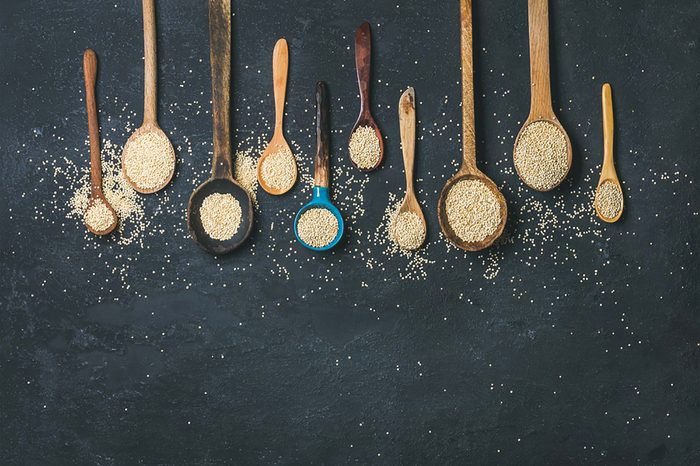
Vegan protein source #9: Quinoa
Though touted as a “high protein grain,” quinoa is actually a seed. Included on the list of complete proteins that aren’t meat, quinoa is typically used as a replacement for rice, which has only half as much protein. Naturally gluten-free, it’s perfect in salads, sides, and more delicious vegan dishes. Try quinoa-stuffed bell peppers as a tasty dinner entrée, or experiment with other creative quinoa recipes. Quinoa also works well in baked goods. (Quinoa vs. rice: here’s what experts want you to know.)
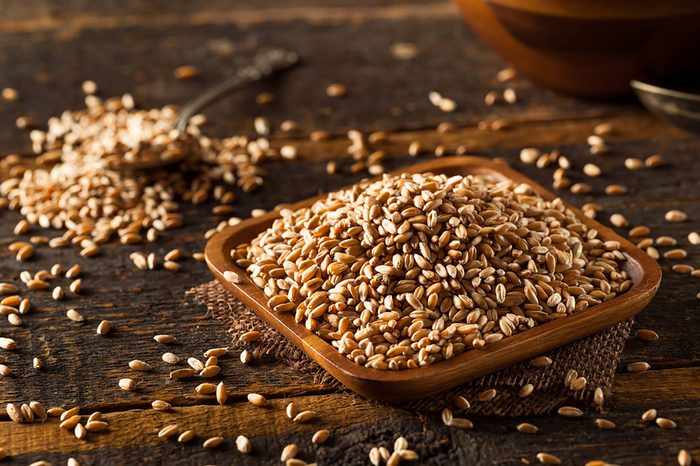
Vegan protein source #8: Farro
This ancient grain packs a decent amount of protein when compared to other grains in the American diet. Although the exact amount of protein varies per type of farro, half of a cup of pre-cooked Italian farro has 10 grams of protein and 5 grams of fiber, per the U.S. Department of Agriculture (USDA). Naturally rich in iron, a nutrient even nutritionists don’t get enough of, farro is an excellent source of nutrition for vegans. Use farro like you would use any other cooked grain—as a base for cooked Asian vegetables, an addition to your favorite soup, or topped with berries and almond milk for a delicious breakfast.
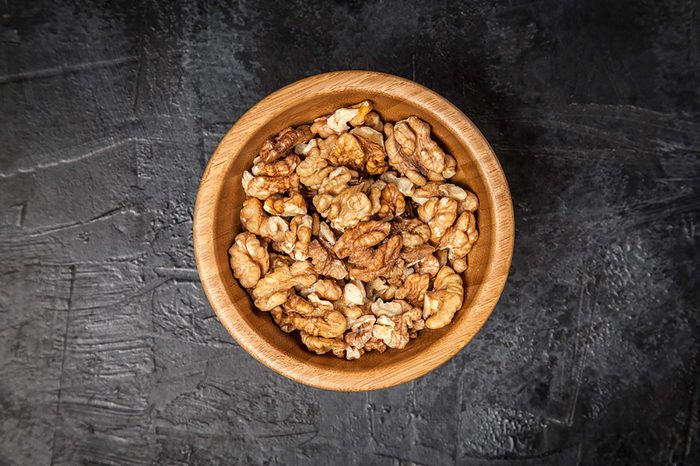
Vegan protein source #7: Nuts
All nuts are not created equal when it comes to protein content. Almonds are high, with 8 grams per quarter-cup serving, while walnuts are lower with 4 grams (but high in omega-3s). Nuts are an easy-to-grab protein-rich snack, but don’t overdo it; they are calorie-dense. Almonds provide nutritional bonuses such as linoleic acid, vitamin E, calcium, magnesium, and riboflavin. Include the top 5 healthiest nuts in your morning oatmeal, your afternoon trail-mix snack, or your vegan protein bar for a dose of protein and healthy fats. You can also try this vegan cashew cheese sauce recipe that can be added to any number of snacks and meals.
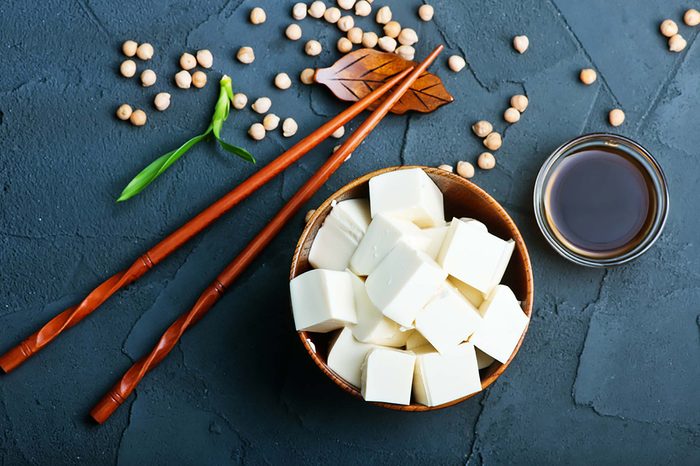
Vegan protein source #6: Tofu
Lower in protein than its cousin, tempeh, tofu still provides a good source of protein for a vegan diet. It comes in three main varieties: soft, firm, and extra firm. Of the many health benefits of tofu, three ounces provides 8 grams of protein and is a great source of essential minerals, like calcium, magnesium, and selenium. Tofu takes on the flavor of the dish it’s cooked in, so spicy Indian- or Mexican-inspired dishes work well. “As one would not find a raw chicken breast appetizing, soy foods like tofu and tempeh are made appetizing when seasonings are added,” says Vesanto Melina, RD, a registered dietitian and co-author of Becoming Vegan: Express Edition. Silken tofu can be pureed and used as a base for cream sauces. Firmer versions are perfect additions to stir-fry dishes, kabobs, breaded and fried like chicken nuggets, or in a breakfast scramble in place of eggs. Check out these mouthwatering vegan recipes from cook Mark Brittman.
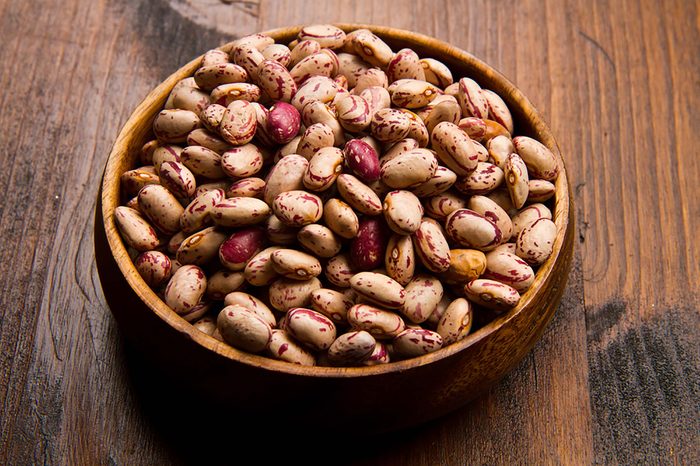
Vegan protein source #5: Beans
Pintos, black beans, and chickpeas are nearly identical in their nutritional profiles—here are all the health benefits of beans—and all of them are excellent vegan sources of protein, providing about 8 grams in half a cup. Because they are also rich in fiber, beans are satisfying as the star of a plant-based meal. Incredibly versatile, beans are obvious choices to add to your favorite stews, chilis, curries, and salads. Mash them for a healthy sandwich spread, or puree them and use them in baked goods to replace part of the oil.
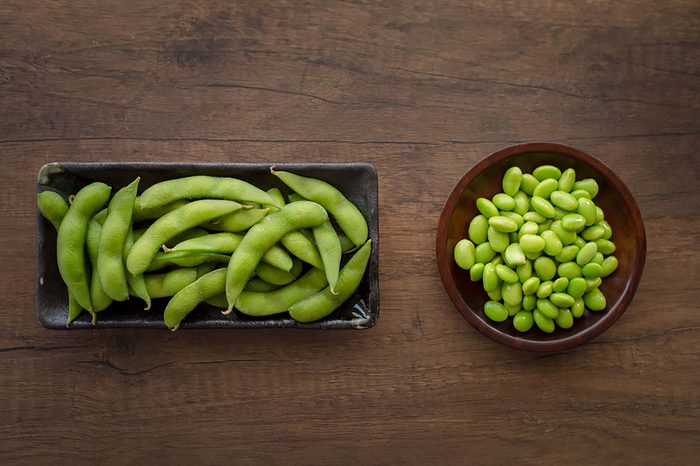
Vegan protein source #4: Edamame
Edamame is the winner of the most nutritious choice among the bean family. Why? “Although all soy foods are highly nutritious, edamame is the least processed form,” explains Melina. One of the healthiest foods you can buy, these delicious green babies are perfect as a snack on their own or included in stir-fry dishes and veggie salads. One-half cup serving provides 8 grams of protein, like other beans. What sets edamame apart? They’re an incredibly rich source of folate, providing 60 percent of your daily needs. Inadequate folate intake can cause a certain type of anemia, and it’s vital for proper development in pregnancy. Edamame also contain 23 percent of your daily needs for vitamin K, an essential nutrient involved in the blood clotting process. Edamame also earns a spot on the list of most potassium-rich foods. Check out these edamame recipes to start reaping all of their benefits.
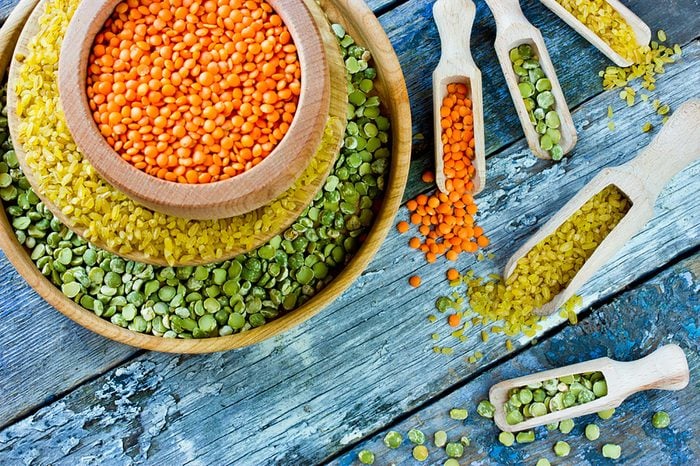
Vegan protein source #3: Lentils
Of all the pulses (the dried seeds of the legume family), lentils are the richest source of protein with 9 grams in just half a cup. These unsung heroes of vegan cuisine are quick-cooking, which makes them perfect for busy weeknight dinners. Lentils are a great addition to slow cooker dishes, so cook up a batch over the weekend. You can also add cooked lentils to salads, soups, or sandwiches. Lentils provide 43 percent of your daily need for folate.
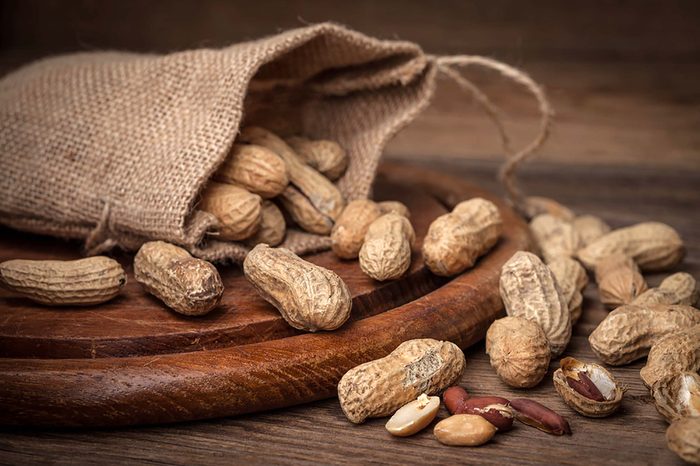
Vegan protein source #2: Peanuts
While peanuts are classified as a legume in the botanical sense, we typically eat them as a nut. As far as nuts and beans go, peanuts boast the highest protein content, with 10 grams in a handful (a quarter cup). Peanuts can be a snack all by themselves, obviously, but consider sprinkling them into your yogurt parfait or atop a green salad or stir fry. Rich in the antioxidants linoleic acid and vitamin E, peanuts are a smart vegan protein choice. Nutritionists are loving peanut butter powder, a natural way to amp up the protein in your meals.
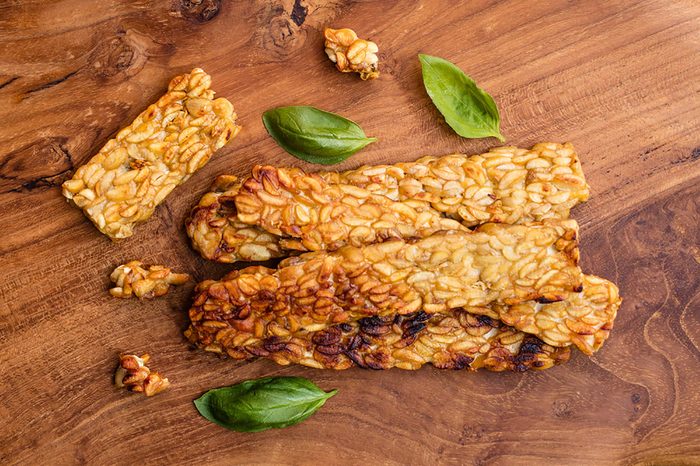
Vegan protein source #1: Tempeh
Tempeh, a fermented soybean cake that comes in a brick-like form, has been eaten in Asia for centuries—and it’s one of the best vegan protein sources. “More and more people are becoming interested in fermented foods and seeing them in a positive light as we become aware of gut microbiota and the importance these microorganisms can have on health,” says Melina. Slices of tempeh can be marinated and cooked in a variety of ways. Without much taste of its own, tempeh will inherit the flavors of the marinades, spices, and seasonings you add. Melina uses seasoned tempeh right from the package and prepares according to directions. “That’s the easiest,” she says. But you can also try it crumbled into marinara sauce or chili for a vegan protein burst. With 15 grams of protein in just 3 ounces, tempeh packs a serious protein punch for the vegan diet and can clear up your acne with its probiotics. It’s also rich in fiber and a good source of zinc, riboflavin, copper, and phosphorus. Learn more about the benefits of a vegan diet and how to avoid any pitfalls.

